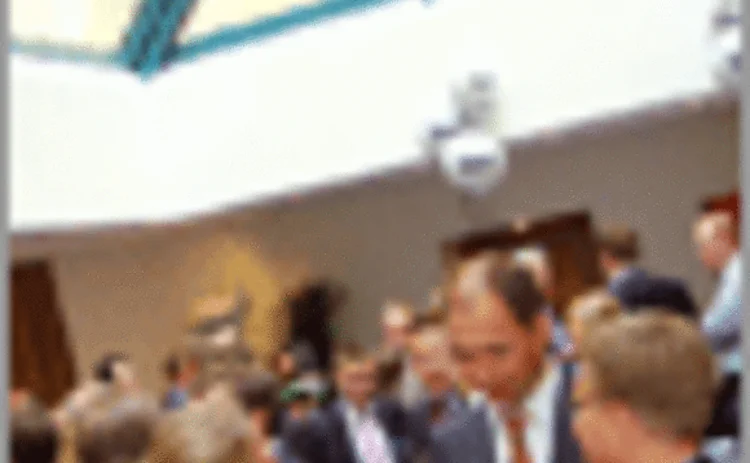
Searching for common ground
The Nordic structured products market is benefiting from an increased supply of products but banks are having to respond to calls for more transparency and liquidity. Meeting interest from small-cap companies is also high on the agenda. Richard Jory reports from the Structured Products Nordic event in Stockholm

Although there is not a common market for structured products across the Nordic countries, there is a consensus view shared by providers that you can sell a structured product on the argument that it offers low correlation to other asset classes.
"We tried to find one product for the region, but we have not found it yet," said Stefan Sonnerstedt, head of structured bonds in Sweden for Nordea. "Denmark has a preference for foreign exchange; Finland and Sweden prefer equities; different markets want different maturities; and there is more cash in some of the markets."
But interest remains in the creation of more regional products, or at least a greater variety. "If we only issued Swedish krona notes in Sweden for Swedish equity-linked products, then our clients would not be very happy," said Magnus Linnersand, head of asset management at Kaupthing Bank.
Linnersand noted that the Swedish market for equity-linked structured products has increased from SKr10 billion ($1.5 billion) in 1998 to SKr60 billion ($9 billion) in 2006. The total volume of structured products, including all asset classes, is estimated to be SKr150 billion ($22.5 billion).
If there is a regional preference, it is for plain vanilla products, using the S&P index rather than the MSCI, for example, on the basis that it is more liquid. "Safe is not boring," said Mats Nyman, investment strategist at Handlesbanken capital markets in Stockholm. "The customer wants to hear a good story and wants to be taken care of ... he pats his own back when the markets rise ... but blames the bank when returns are bad."
One new underlying that investors from the region have requested is anything related to insurance, said Nyman, while Linnersand noted that some life insurance products are already available. But uptake from pensions and life insurance companies has been slow."This is a surprise, as they are nothing but structured products companies," said Nyman. Linnersand noted that insurance companies were using structured products as assets, and also highlighted how important the products are for municipalities.
As for other products, providers have been "putting the complexity into indexes, rather than options. With synthetic strategies there is always a demand for equity-linked products," Linnersand said. "There is also demand for Mifid-compliant vehicles. And funds of structured products - open-ended vehicles without maturities, will keep appearing."
Investors continue to seek capital-protected products, along with a growth option, said Tim Mortimer, managing director of UK-based Future Value Consultants.
As far as underlyings are concerned, the product make-up is still dominated by equities, with global equity products accounting for around 40% of the region's output, said Nyman. Nordic equity products account for a further 30%, non-equity products (multi-asset bonds, commodity bonds and FX, etc) for 20%, with emerging markets making up the remaining 10%.
A predilection for EM
One in four trades in the Nordic region is linked to emerging markets, and the demand for products with an emerging markets element continues, said Ewran Mersin, head of equity/fund derivatives and secondary products, Nordic region, Baltics and Poland at Calyon. This taste for emerging markets investments is the manifestation of a regional psychology that will always support the underdog, according to Annika von Haartman, head of the prospectus and listing unit of Finansinpektionen, Sweden's Financial Supervisory Authority.
Africa, the Balkans, Turkey, Ukraine and Vietnam all feature in new indexes created for the Nordic region as investors show a willingness to buy volatility. The most recent of these indexes includes the N11, an index that comprises: Bangladesh, Egypt, Indonesia, Iran, South Korea, Mexico, Nigeria, Pakistan, the Philippines, Turkey, Vietnam; the Bric countries (Brazil, India, China and Russia); and Africa. The focus is on growth rather than volatility, said Calyon's Mersin.
"We started our thoughts for our emerging markets presentation with quite a complex talk, then went vanilla, and then even more vanilla," said Mersin. This approach more closely matches a buyer base that is interested in complexity at the fund or index level in the underlyings, rather than in the payout formula, said Mersin.
Volatility can be reduced by using money markets instruments in the funds, said Mersin, who gave as an example a rough formula of including 80% emerging markets equity in a bullish emerging markets strategy, along with 20% absolute returns, and reversing those stakes in a bearish strategy. He said that one Finnish financial institution is planning to go one step further, and is currently working on a dynamic emerging markets portfolio that will incorporate a protected feature to control the volatility of the underlying.
Press perception
At least the public perception of structured products has improved, said Nyman. "It is important that we interpret the introduction of the Markets in Financial Instruments Directive later this year not as a threat, but as an opportunity to improve transparency," he added.
Voicing widespread concern about poor media coverage, Linnersand reiterated the need for transparency. "The media hasn't been on our side," he said.
Market practitioners should shoulder some of the blame for this, said Sonnerstedt. "We can blame the media and say that they are the stupid ones, but we have failed to tell them a good story ... Ninety percent of the articles are negative," he said.
While much of the negative press may result from a lack of knowledge, this is a complex area of finance, which many of the speakers were quick to acknowledge. Linnersand prefixed a description of volatility with the cautious request, "Please interrupt me if I speak Greek now".
For Sonnerstedt, the biggest challenge lies with "brochures and marketing, although these are better than they were two years ago, when there was a suspicion of high fees - Mifid will help with that process. The decision on whether structured products are defined as 'complex' or 'non-complex' will have an effect."
Otherwise, the request is for "simple products, based on a world index or single index. We don't see a need for any major changes, and the preference is for simple product that is quick to market," he added.
Getting together
The creation of a Swedish structured products association would assist the speed of such developments, said Sonnerstedt. Nyman, Linnersand and Sonnerstedt all said they would reveal their share of the market to such an association, so long as a satisfactory definition of what a structured product is can be agreed on.
Catching the mood of what it would take to bring all parties together in one national association, Antti Parviainen, head of structured products Finland for Nordea, and chairman of the Finnish Structured Products Association (FPSA), opened the roundtable on the pivotal role of trade bodies with fighting talk: "Keep it topical and I'll intervene if it gets physical."
The FPSA was established in spring 2005 and boasted 17 members by the time of this year's conference, although anecdotal evidence suggests that figure will soon increase. Predictably, the panel cited investor education and market practice as the biggest benefits of such associations. The FPSA also produces market volume statistics "and trustworthiness for the investor", said Parviainen.
The Finnish panel voiced similar experiences to Sweden with regards to press coverage. "The media need educating. Some of them are still in the Middle Ages," said Christer Schoultz, head of structured products and alternative investments at FIM.
The media may need more knowledge about structured products, but this point was not helped by an error that appeared in an advert for a structured product in a Swedish newspaper at the beginning of June. The mistake was serious enough to attract the attention of Sweden's FSA. "We have never stopped an offer, but this week we came quite near," said Finansinpektionen's von Haartman, speaking on June 13.
Only users who have a paid subscription or are part of a corporate subscription are able to print or copy content.
To access these options, along with all other subscription benefits, please contact info@risk.net or view our subscription options here: http://subscriptions.risk.net/subscribe
You are currently unable to print this content. Please contact info@risk.net to find out more.
You are currently unable to copy this content. Please contact info@risk.net to find out more.
Copyright Infopro Digital Limited. All rights reserved.
You may share this content using our article tools. Printing this content is for the sole use of the Authorised User (named subscriber), as outlined in our terms and conditions - https://www.infopro-insight.com/terms-conditions/insight-subscriptions/
If you would like to purchase additional rights please email info@risk.net
Copyright Infopro Digital Limited. All rights reserved.
You may share this content using our article tools. Copying this content is for the sole use of the Authorised User (named subscriber), as outlined in our terms and conditions - https://www.infopro-insight.com/terms-conditions/insight-subscriptions/
If you would like to purchase additional rights please email info@risk.net
More on Markets
Buy side would welcome more guidance on managing margin calls
FSB report calls for regulators to review existing standards for non-bank liquidity management
Citi halves swaptions book with US retail funds
Counterparty Radar: Mutual funds and ETFs cut exposures by 22% in Q4
Who’s winning the €STR futures race? Depends how you measure
CME, Eurex and Ice all claim to be leading, but experts say it’s too early to pick a winner
CDS review seeks to tackle conflicts ‘elephant’
Isda AGM: Linklaters proposes overhaul for determinations committee - including independent members
Saudi Arabia poised to become clean netting jurisdiction
Isda AGM: Netting regulation awaiting final approvals from regulators
Buy side looks to fill talent gap in yen rates trading
Isda AGM: Japan rate rises spark demand for traders; dealers say inexperience could trigger volatility
JP Morgan’s new way to trade FX overlays
Hybrid execution method allows clients to put dealers in competition via a single trading agreement
Pension funds eye 30-year Bunds as swap spread tightens
Long-dated bonds continue to cheapen versus euro swaps, and some think they might fall further
Most read
- Top 10 operational risks for 2024
- Top 10 op risks: third parties stoke cyber risk
- Japanese megabanks shun internal models as FRTB bites







